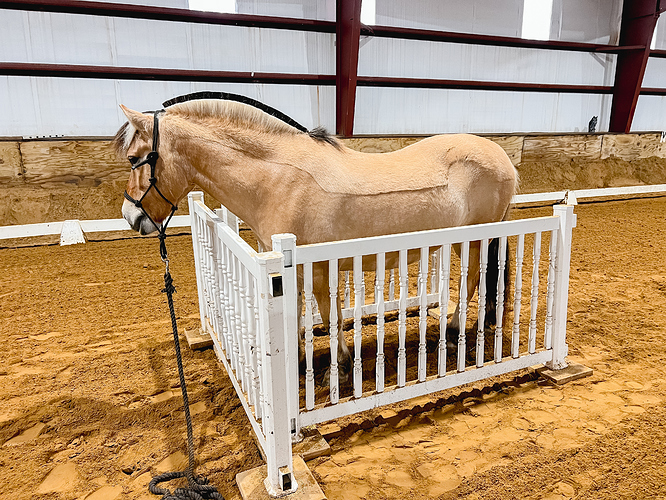Alrighty folks buckle in - and please be courteous.
I am gearing up for hauling out to lessons and schooling shows hopefully this summer. My horse was a bit sticky to load solo for the shipper that brought him to me, so I decided I wanted to take my time and practice at home to make hauling a good experience for him.
Day 1: yep, sticky. I had an hour to burn so I spent it loading and unloading, practicing getting on and halfway off and back on again (with dinner as a bonus for staying on). I have decent control of his feet unless he’s truly alarmed and then I let him back off and immediately reload. Ended on a good note.
Day 2 (today): same spiel but he walked right on this time. Unloaded and reloaded a few times, then closed him in. No issue. This is with my divider swung over (it is NOT easy or quiet to swing, more on that later). Opened up, unloaded, loaded him again, closed up. This time, when opening it up, he spooked a bit at something and started to back out. He hit my full length butt bar (which was still up), broke it, but bounced back into the trailer and stood. I cleaned up the carnage, loaded and unloaded a few times (he was understandably nervous again), and then called it a day.
Two things I’m debating.
- with my full length bar broken (he ripped the upper of the dual wall attachments out of the wall…) I either need to load and swing the divider over and use the regular butt bars or teach him to load in the single width stall. The divider is NOT easy to move and takes some brute force and noise. I’m not sure I can do that with him in there. So, load with the stall at single width??
- I don’t want to teach him to break butt bars. Is there value in shutting him completely in and letting him eat dinner on there for a few days? Or should I skip the standing on the trailer and start taking him for a lap around the block?
My trailer is a two horse straight load bumper pull with a ramp. Thoughts?

 .
. . This horse knows how to yield his hindquarters with a flick of the rope so that helps. It’s the Stay On There, Bud that I have problems with! He is very lazy though, so I’m hoping that will work in my favor
. This horse knows how to yield his hindquarters with a flick of the rope so that helps. It’s the Stay On There, Bud that I have problems with! He is very lazy though, so I’m hoping that will work in my favor
